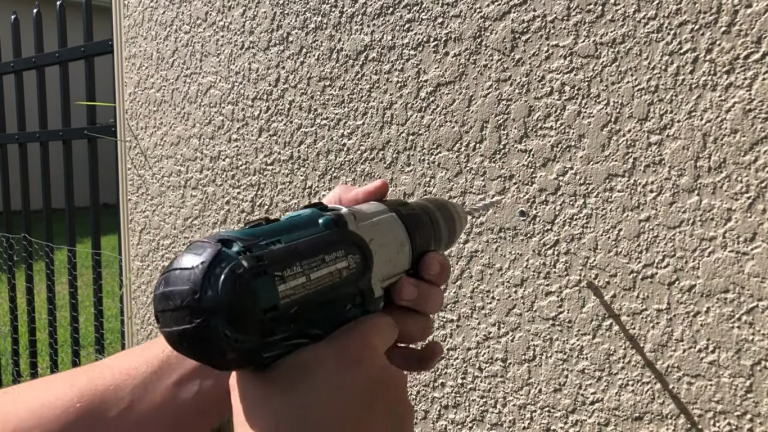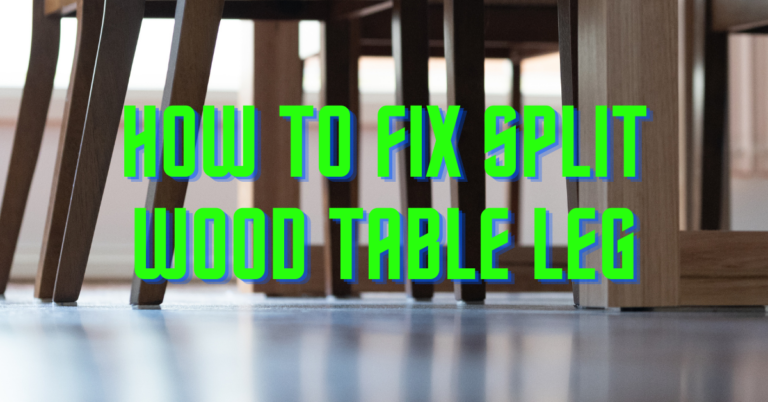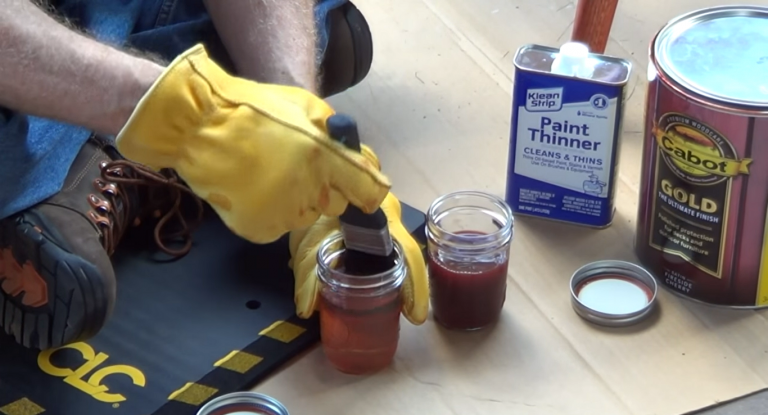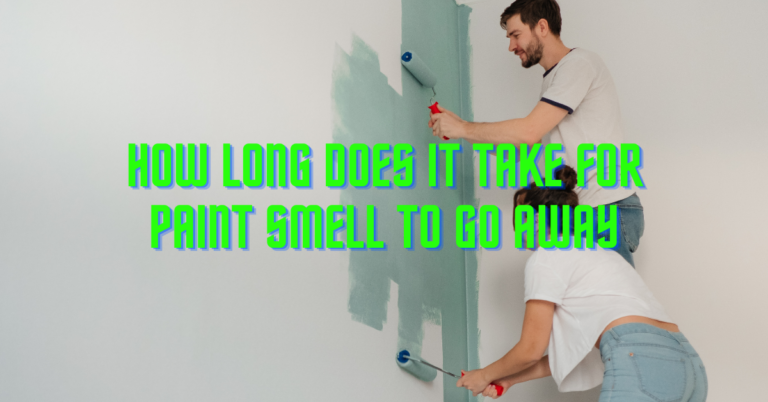Will Bleach Stop Wood Rot? How to stop Wood Rot With Bleach
Having your wood rot might be disheartening and, if left untreated, will leave your wood in a devastating position. The fact that your wood rots don’t necessarily mean you have to go on all new furniture, all you might need is a single swab of household bleach. Too good to be true, right? But funny enough, it is.
Fungi cause wood rot, and the high level of humidity the wood possesses as a result of the moisture etched deep in the wood provides food and the sufficient temperature a typical fungus needs to live. Once the fungi start feeding, they breed, multiply, ravage, and infest the wood until it decays completely.
Getting to see your wood deteriorate might be confusing, and you might be doubtful if bleach will stop wood rot. A lot of people ask, “will bleach stop wood rot?”
Household bleach stops and treats wood rot. You might want to ask me how possible that is? This is what this article is all about. Household bleach which is chlorine once applied on the wood’s surface, will seep into the wood to kill the rotting agent, especially the fungi.
One beautiful thing about using chlorine is that it removes the rot spots making the wood look good as new. However, chlorine might alter the wood’s color, which is why it is advisable to dilute chlorine with clean, warm water before application. While applying your bleach, you need to note the surface you’re working on.
You need an impervious surface because after pouring the bleach, you need to scrub it in. This will get the bleach into the wood to kill the fungi within and not dwell on the surface. This article contains all you need to know about wood rot, the various types of rot, how to prevent, and the pro-tips on the preventive measures of keeping your wood safe from rot.
All at a Glance
What can be used to treat wood rot?
Fungi and some classes of bacteria solely need food and sufficient temperature to survive. Wood soaks up water quickly as moisture seeps into it, making it very easy for fungi to breed and spread evenly deep inside the wood within a short period. The more the fungus invades the wood, the more it rots. Immediately the rot is detected. You can stop it, but how?
It’s simple to get rid of wood rot using borate, ethylene glycol, or bleach. You can get borate at any DIY store. Boric acid is sufficient such that it kills the fungi alongside its spores and asides that the acid binds to the water, thereby dissolving it. All you have to do is pour the acid inside the wood, and the fungi are gotten rid of.
On the other hand, ethylene glycol works just like boric acid but does not affect dry rot. For dry rot, the wood has to be refurnished, such that preservatives will be added to the wood alongside surface coatings such as paint before glycol can be added to it to have an effect.
On the other, Bleach is one of the best ways of preventing wood rot due to its effectiveness. Diluted chlorine kills the fungus, bacteria as well as any agent responsible for the rotting.
Causes of wood rot
Getting to understand wood rot and the type of rot makes it easier to treat the wood more effectively. Wood decay often occurs when excess moisture gets its way into the wood. The water gives room for moisture and high-level humidity, which is the environment that encourages bacteria and fungi that feed and infest on the wood.
As the fungus feed on the wood, the fungus spores germinate and colonize, thereby spreading to the other parts of the wood, which results in the successive decay of the wood. Dry rot, which is one of the types of wood rot, is the most destructive. It ravages wood with at least 20% moisture content, while wet rot requires at least 50% moisture content before the wood starts decaying.
Still, it’s evident that moisture causes a lot of harm to wood, and it’s always advisable to treat your wood as soon as you notice any trace of decay.
Types of wood rot
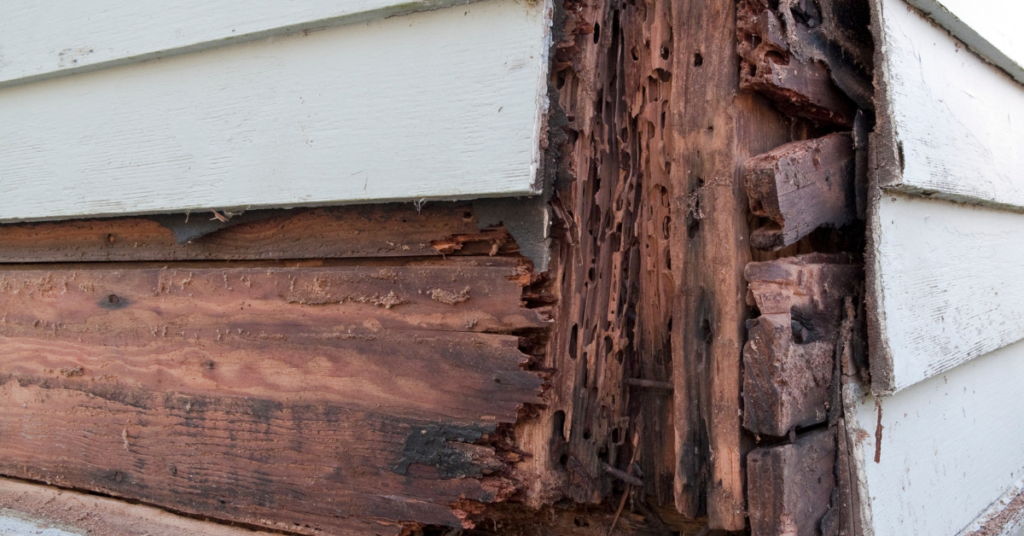
Before you treat your wood rot, you need to know the type of wood rot you’re dealing with first. This will help you to understand how to treat your wood most suitably. There are three types of wood rot which are brown, dry, and white rot.
Brown rot
Brown rot is not so-called because of the color the rot possesses. The characteristic feature of brown rot is that the wood with the rot shatters apart so much that it crumbles, and as the decay process elongates, the wood gradually rot till it turns into powder.
Dry rot
This is a type of wood that is completely rotten with the decay processing completed. White and brown rot eventually graduate into dry rot. Dry rot is done with the rotting process and won’t rot any longer.
White rot
White rot is easily detected with its color, although it doesn’t have the exact white color until it gets to a particular stage in the rotting process. White rot makes the wood soft, making it look spongelike.
Will bleach stop wood rot?
Wood pieces used for furniture for both interior and exterior purposes have a particular setback: water, including moisture. Once the water starts seeping into your wood, decay is inevitable. Bleach is commonly used in treating wood rot, but it’s most effective on impenetrable surfaces. Borate solutions are mostly used to treat all types of wood rot except dry rot. Still, bleach is very effective in treating wood rot.
Steps on how to use bleach to treat wood rot
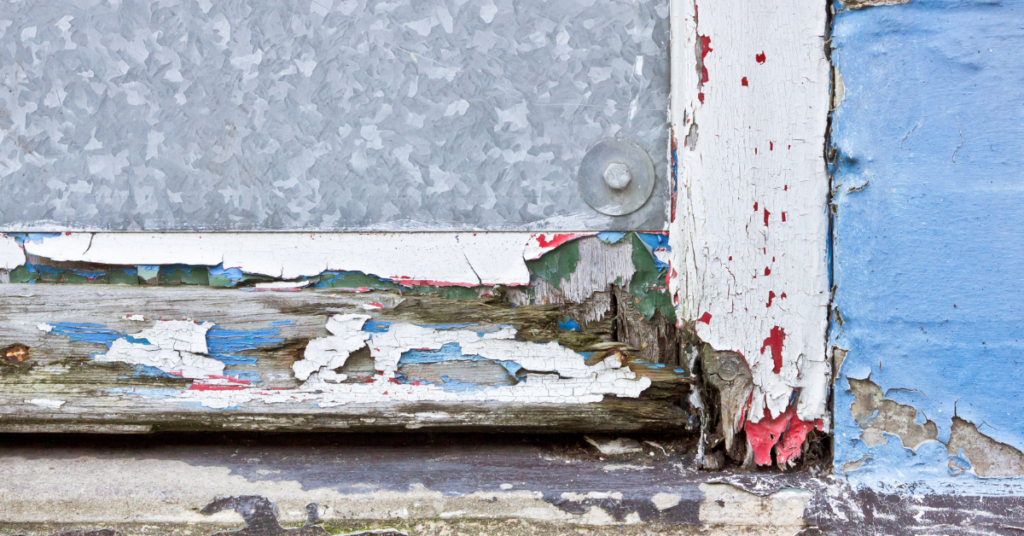
Infesting bacteria and fungus won’t stop invading until your wood is decayed. They continue feeding and multiplying until they finally get rid of the wood, which is why it’s necessary to treat your wood rot once detected.
It’s a thing to notice your wood rot, and it’s a different thing to know how to treat or prevent your wood from decay. The following steps will guide you on how to use bleach to treat wood rot.
Step one: Identify the source of the moisture
The best and most important way to tackle wood rot is to get the source of the moisture. Most fungi attack damp wood with a moisture content of about 20%. It’s necessary to get rid of the moisture because it’ll continually give the fungi a food source that’ll make them ravage the wood.
Wood decays as a result of leaking windows, seeping water into the wood, condensation. The moment you detect the moisture source, repair the plumbing and leaks, allow the wood to dry. This will enable you to know the extent of rot damage. You can also get a dehumidifier and apply it to the wood before drying.
Step two: Get the wood ready for treatment
Get the decayed wood and excavate the rot. Decking, roofs, and window frames are the most liable to rot. Once your wood is decayed, you have to prepare your wood for treatment, and in doing that, first, off you have to scrape the rot out of the hollows, corners, and crevices to get rid of strands of rotted wood pieces.
You can make use of a stiff brush to effectively remove all the rot particles. The rot might have spread throughout the wood, which means you either have to get another wood or seek professional help.
Step three: Apply bleach has proven to treat and prevent wood rot.
Bleach kills the fungi to the extent that it won’t be able to grow again. It also removes the stains the rot gives the wood, making it look brighter than it was. After preparing and cleaning your wood of its dirt and rot, the next thing is to apply bleach. Applying chlorine might affect the color as a result of its bleaching characteristic.
This means you have to use diluted chlorine, which you can apply as either a liquid or spray. One important thing you need to make sure before anyone the bleach is to work in a well-ventilated area or, better still, put on protective gloves, goggles, and nose mask to avoid choking or the bleach getting in the eye. To apply the bleach;
- Lightly touch the affected areas with a cotton swab filled with chlorine, apply it on the wood and allow it to soak into the wood, wipe off the excess bleach and leave it dry. You can spray the bleach instead of dabbing the surface with a swab.
- After all the corners and crevices are treated and dry, fill the cracks alongside the corners with epoxy wood filler. The wood fillers will help to fortify and strengthen the wood from its initial fragility and scanty interior.
- Prime and paint with your desirable coat.
Step four: keep your wood in good condition.
After you apply the coat, make sure you keep your wood from moisture. Once you notice cracks, make sure you seal them with caulk immediately. Make an entry roof to prevent rain from beating your front door to protect your door. Perhaps your area is having a high level of humidity. Always make use of a dehumidifier.
Pro-tips on how to prevent wood rot
- The most important way to prevent wood rot is to protect your wood from moisture as well as water. The moment moisture starts getting into your wood continuously. It’ll provide a good environment for fungi to feed, breed, and invade the wood till it rots.
- Adding preservatives to your wood is another way of preventing rot. Even though your wood might not contain any form of preservative chemical from the onset, you can add it to the wood later on. Although the preservatives won’t stop the moisture, they’ll prevent the wood from rotting.
- Another way of preventing the wood from rotting is to use a decay-resistant type of wood. Woods like oak, teak, rosewood, and redwood are expensive but still rot resistant.
- While installing your wood, make sure you don’t install your wood deep in the ground. When your wood is in the ground, the ground’s moisture gets into the wood, which causes wood rot. Even if your wood has to be in the ground, make sure it doesn’t go deeper than 15 inches.
- Always have a dehumidifier handy because around roofs and basements, water leaks are inevitable, which eventually seeps into your wood, making it rot. To Run a dehumidifier often after a leak, the dehumidifier will clean up the moisture and prevent the water from getting into the wood as soon as you realize excess moisture.
- For areas with a high humidity level, and your wood is located around such an area, ensure you install ventilation as these vents will provide a breathing ground for your wood.
- Keep your wood away from gutters and downspouts.
- You should know that paint wouldn’t stop wood rot. First off, the wood has to be treated before paint is applied to it. In case you want to paint rotted wood, you need to treat the wood with a wood hardener first before applying paint.
- Most importantly, once you notice wood rot, start the preventive measure immediately.
Conclusion – Will Bleach Stop Wood Rot?
Fungi cause wood rot as it gets its needed source of food and temperature from the damp, moist environment the wood gives. The fungi multiply in the wood, thereby causing more damage to the wood. There are three types of rot which are the dry, white, and brown rot. So far, the dry kind of rot is the most destructive type of rot because it is typically done with its decaying process.
At times excess moisture seeps into the wood, making it deteriorate. It’s advisable to get a dehumidifier and apply it when the humidity level is high in situations like this. Boric acid, ethylene glycol can be used to prevent wood rot, but ethylene is not effective on dry rot as the wood has to be treated, primed, and coated with paint before ethylene glycol can affect it.
Bust as regards bleach which is chlorine, once applied, kills the fungus, including its spores, and it also removes all the rot stains on the wood, making the wood look brighter than it was in a long time. Before applying your bleach, make sure your chlorine is diluted with clean, warm water so that it won’t discolor and degrade your wood. You can apply the bleach directly to the wood or by merely spraying.
Important Reads:



